An Array of Bytes
The first view of memory we’ll use is wrong for a number of reasons that we’ll explore throughout the course. It does, however, serve as a nice abstraction to avoid worrying about what’s happening at the hardware level. This view of memory is as an array of \(N\) bytes:
byte array[8];
When we receive memory from the stack or the heap, we must assume it is filled with junk. Sometimes, this junk will come from a previous user; other times, it will be all zeroes. All of our pictures will choose arbitrary bytes to fill memory with, but the actual values of these bytes are not important.
uint8_t and Pointers
uint8_t i = 10;
uint8_t *p = &i;
C Strings
char *str = malloc((strlen("hi") + 1) * sizeof(char));
*str = 'h';
str[1] = 'i';

int and Endianness
FIXME. add a section on endianness
Linked Lists
Linked List Node
typedef struct node {
uint64_t data;
struct node *next;
} node_t;
node_t *node1 = malloc(sizeof(node_t));
node_t *node2 = malloc(sizeof(node_t));
node_t *node3 = malloc(sizeof(node_t));
node1->data = 10;
node2->data = 100;
node3->data = 1337;
node1->next = node2;
node2->next = node3;
node3->next = NULL;

A Program’s View of Memory
0xFFFFFFFFFFFF
Kernel Memory
Stack
↓
↑
Heap
Data
Text
Reserved
0x000000000000